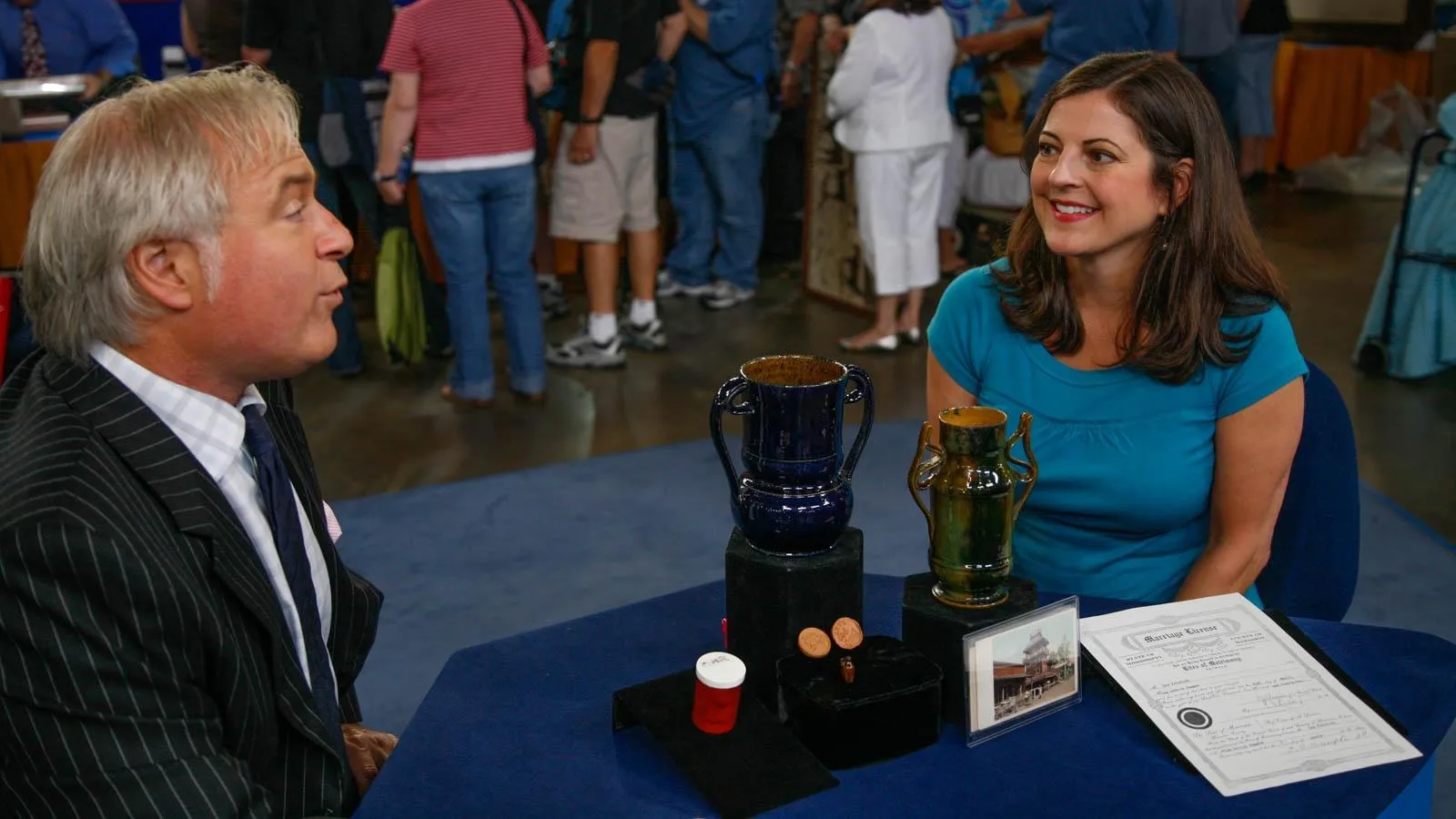GUEST: Yeah. I don't know very much at all other than, uh, we bought an estate. This was part of it. We've had these tapestries about eight years, a little over. That's really about all I know.
APPRAISER: Do, do you display it at home? What do you do with it?
GUEST: Yeah, we, we do. We separate them and have them, one on each side of the doorway going from the living room to the den.
APPRAISER: Yeah?
GUEST: And, uh, we just enjoy looking at them.
APPRAISER: These are really wonderful weavings woven probably between 1600 and 1650, so the early part of the 17th century...
GUEST: Okay.
APPRAISER: ...in Brussels, which really was the sort of Mecca for Renaissance tapestry weaving.
GUEST: Okay.
APPRAISER: They had the finest-quality weavers there. These two panels were originally part of a much larger tapestry, and my guess is, the tapestry might have been maybe ten feet tall by about 15 feet wide. And these would have been cut out maybe in the 19th century...
GUEST: Mm-hmm.
APPRAISER: ...and then reinserted into this carved walnut frame. The frame itself is not all that significant to the value of the tapestry, but it's pretty nicely done. Perhaps the tapestry got damaged, or parts of it got damaged, uh, and it made sense to cut out the better pieces and then install them in a, in a panel like this.
GUEST: Right.
APPRAISER: What do you think the depiction is?
GUEST: When I first saw them, I thought, "Well, maybe it's Caesar." But I don't...
APPRAISER: It's, it's probably a Roman ruler.
GUEST: Yeah.
APPRAISER: It's presumably the same person in both panels.
GUEST: Right.
APPRAISER: It is an emperor, he is seated in a chair, and generally when they're seated in a chair like this in an outdoor setting, it would signify that it's the ruler.
GUEST: Right.
APPRAISER: And overall, the condition's pretty good. If you look in here in this spot, you can see some of the silk highlights, which are the shinier.
GUEST: Right.
APPRAISER: And then the rest of it's wool. And you can see some restoration in it right in here. In their day, tapestries were considered more valuable than paintings. And the designer would have been a pretty significant artist, probably.
GUEST: Hm.
APPRAISER: What did you pay for it?
GUEST: Well, for the entire, uh, tail end of the estate, we paid $650.
APPRAISER: Okay, well, at auction, these two panels, sold together as one unit, would probably bring somewhere between $12,000 and $15,000.
GUEST: Okay, well, good.











